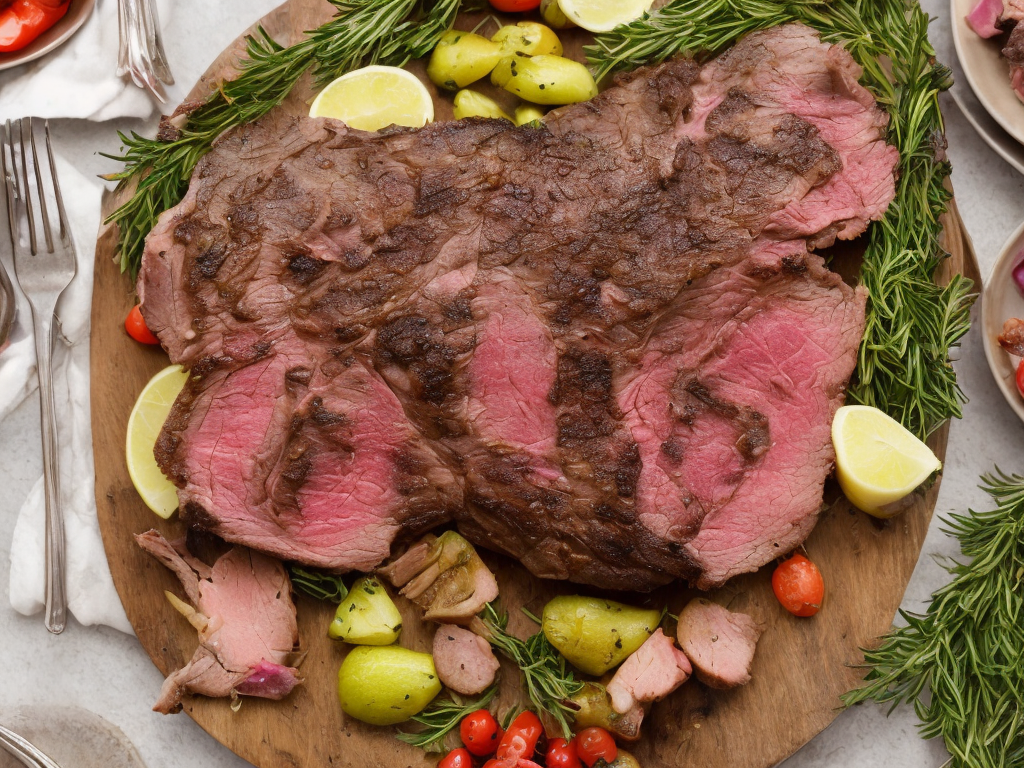
Lamb is a flavorful and versatile meat that can be cooked in a variety of ways. Whether you prefer it roasted, grilled, or slow-cooked, there are a few tips and tricks to ensure that your lamb comes out perfect every time. In this article, we will explore the different cuts of lamb, the best cooking methods for each cut, and the essential tools and techniques to make your lamb dishes truly shine.
Choosing the right cut:
Before we get into the cooking methods, it's important to understand the different cuts of lamb and what makes each one unique. Here are some of the most common cuts of lamb you will find in the market:
1. Leg of lamb- This is one of the most popular cuts of lamb and is perfect for roasting or braising. It is taken from the hindquarters of the animal and is usually sold bone-in. A leg of lamb can weigh anywhere from 3-8 pounds and is great for a large family gathering or dinner party.
2. Lamb shoulder- The shoulder cut is a tough and fatty piece of meat that is best suited for slow-cooking methods such as braising or stewing. It can be sold bone-in or boneless and is a budget-friendly option that yields fork-tender meat.
3. Lamb chops- Chops are cut from the rib, loin, or shoulder and are a popular choice for grilling or pan-frying. They are sold bone-in or boneless and can be cut thick or thin depending on your preference.
4. Rack of lamb- This is a premium cut of lamb that is great for special occasions or elegant meals. It is taken from the rib section and is sold as a whole rack (usually 8 ribs) or a half rack (4 ribs).
Cooking methods:
Now that you know the different cuts of lamb, let's explore the best cooking methods for each one.
1. Roasting- Roasting is a dry-heat method that works well for cuts like leg of lamb or rack of lamb. To roast a leg of lamb, preheat your oven to 350 degrees F and season the lamb with salt, pepper, and any other herbs or spices you prefer. Place the lamb in a roasting pan and insert a meat thermometer. Roast the lamb until the internal temperature reaches 135 degrees F (medium-rare) or 145 degrees F (medium) for a leg of lamb. For a rack of lamb, roast for 20-25 minutes at 450 degrees F for medium-rare.
2. Grilling- Grilling is a great way to cook lamb chops or a rack of lamb. Start by seasoning the lamb with salt, pepper, and any other spices you prefer. Preheat your grill to medium-high heat and grill the lamb for 4-5 minutes per side for medium-rare. For a rack of lamb, use the indirect heat method by placing the lamb on the cooler side of the grill and cooking for 20-25 minutes for medium-rare.
3. Braising- Braising is a slow-cooking method that works well for tough cuts like lamb shoulder. Start by searing the lamb in a hot pan until browned on all sides. Remove the lamb from the pan and sauté some onions and garlic until softened. Add the lamb back to the pan along with some chicken stock, wine, or other liquid, and any herbs or spices you prefer. Cover the pan and cook on low heat for 2-3 hours until the meat is tender and falling off the bone.
4. Stewing- Stewing is another slow-cooking method that works well for lamb shoulder or other tough cuts. Start by searing the lamb in a hot pan until browned on all sides. Remove the lamb from the pan and sauté some onions and garlic until softened. Add the lamb back to the pan along with some chicken stock, wine, or other liquid, and any vegetables or legumes you prefer. Cover the pan and cook on low heat for 2-3 hours until the meat is tender and the vegetables are cooked through.
Essential tools and techniques:
No matter which cooking method you choose, there are a few essential tools and techniques that will make your lamb dishes even more delicious.
1. Seasoning- Lamb has a strong and distinct flavor that can be enhanced with the right spices and herbs. Some popular options include rosemary, thyme, garlic, paprika, cumin, and coriander. Don't be afraid to experiment with different combinations to find your favorite flavor profile.
2. Temperature control- Whether you're roasting, grilling, or braising, it's important to monitor the internal temperature of the lamb to ensure that it is cooked to your desired level of doneness. Use a meat thermometer to check the temperature and remove the lamb from the heat once it reaches the desired temperature.
3. Resting- After cooking the lamb, it's important to let it rest for at least 10 minutes before carving or serving. This allows the juices to redistribute throughout the meat, resulting in a more flavorful and tender dish.
4. Carving- To carve a leg of lamb, place it on a cutting board with the bone facing up. Use a sharp knife to cut along the bone, separating the meat into slices. For a rack of lamb, simply cut between the bones to create individual chops.
In conclusion, cooking lamb is a skill that takes practice and patience. By understanding the different cuts of lamb, the best cooking methods for each cut, and the essential tools and techniques, you can create delicious and impressive lamb dishes that are sure to impress your family and friends. So go ahead and give it a try- your taste buds will thank you!
 Self-Instruct
Self-Instruct